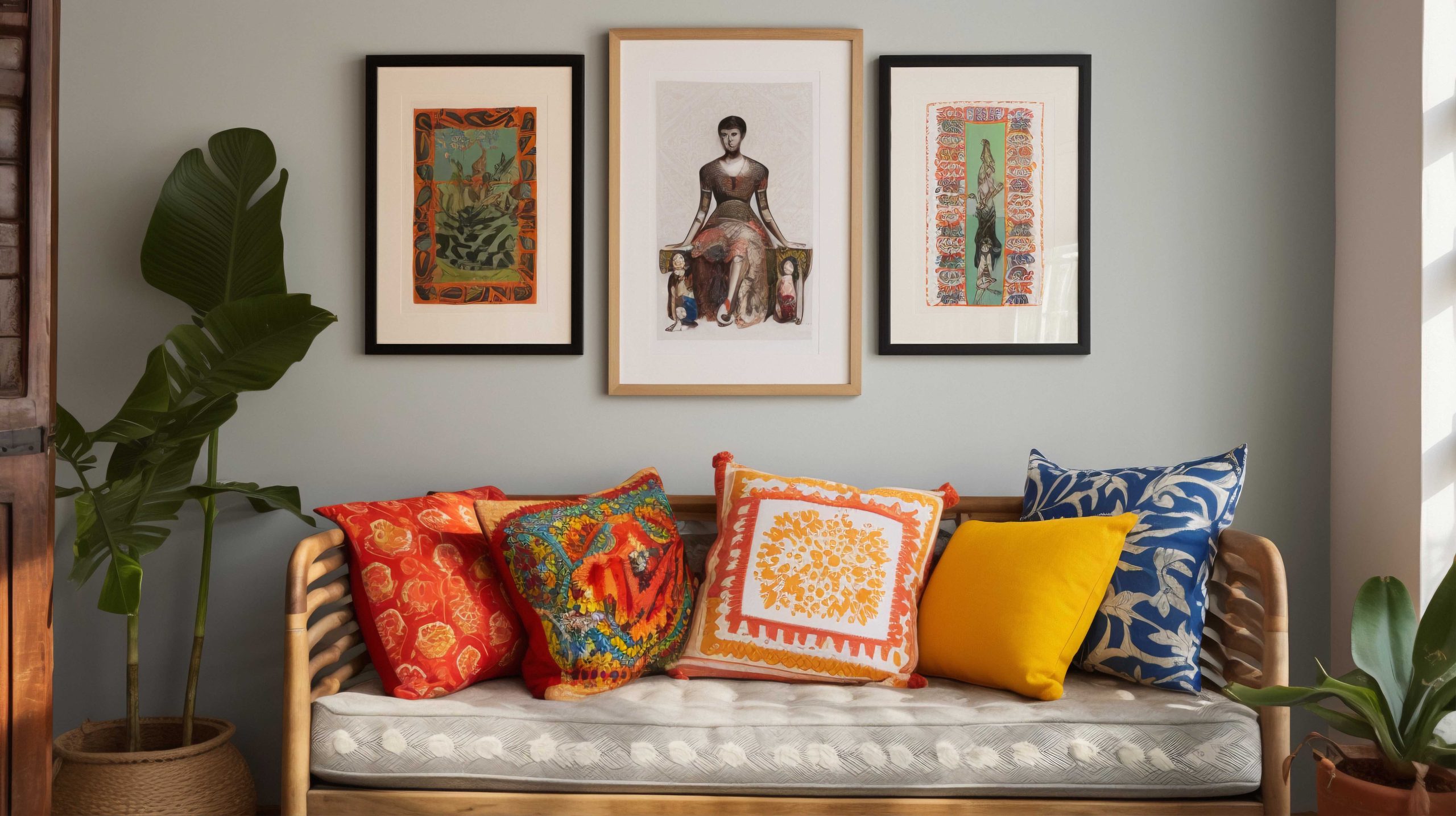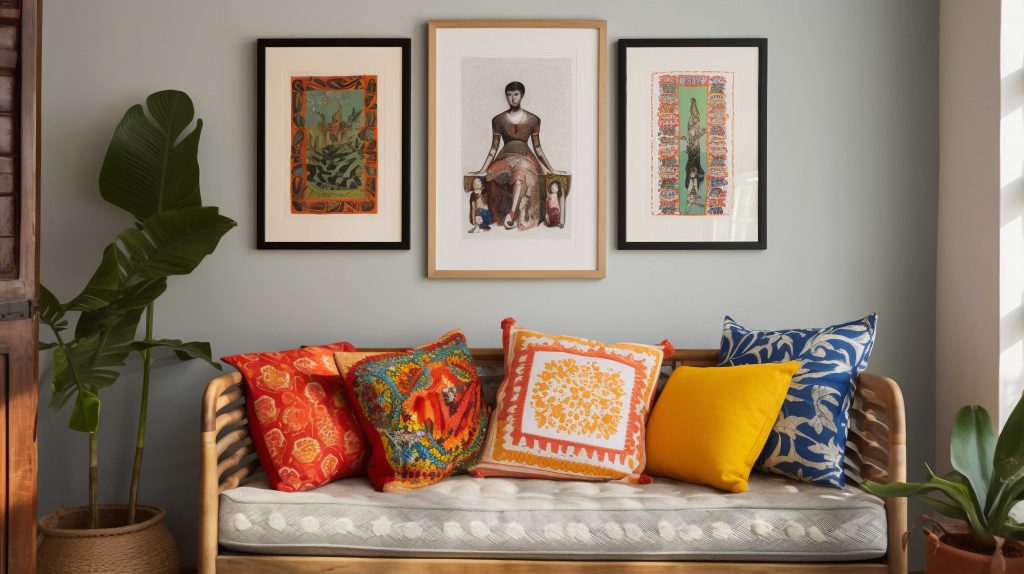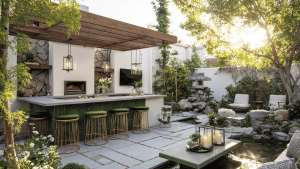Interior decor is in the midst of a renaissance, driven by cultural shifts, technological breakthroughs and new lifestyle priorities. From natural to maximalism, interior design is dynamic—reflecting our collective desire for a space that is visually stunning, personal and sustainable. From smart innovation to eco-conscious choices, our homes and offices are true reflections of who we are and what we value.
Keeping up with the latest interior decor trends is the key to transforming an ordinary space into a retreat. These trends go beyond aesthetics—they embody a movement towards green living, personalised expression and technology integration. Whether we’re updating a cozy apartment or a workspace, understanding the emerging interior designs and styles will inspire us to create environments that are beautiful and meaningful.
In this article, we explore five trends that will shape interior design in 2026. From sustainable materials and bold palettes to the rise of smart technology, wellness-focused spaces and deep personalisation, these innovations change how we think about our space. Join us as we discover how to refresh our environment with fresh ideas.
Sustainable and Eco-Friendly Design

As awareness of environmental issues continues to grow, homeowners and designers are turning to eco-friendly materials, energy efficiency and mindful consumption. Interior design is no longer just about aesthetics; it’s about creating spaces that nurture well-being while respecting our planet. From selecting renewable materials to reducing waste, integrating eco-conscious principles into our interiors can lead to healthier, more sustainable lifestyles—without compromising style.
- -Opt for materials like bamboo, cork, reclaimed wood, and organic cotton. These sustainable options are environmentally friendly and add warmth and texture to the space. Look for certifications such as FSC or GOTS to ensure responsible sourcing.
- -Incorporate energy-saving appliances, LED lighting, and smart thermostats to reduce the carbon footprint. Maximise natural light with strategic window placement and light-coloured walls to lessen the need for artificial lighting during the day.
- -Select paints, varnishes and adhesives that are low in volatile organic compounds. These reduce indoor air pollution and create healthier living environments for you and your family.
- -Give new life to old items by upcycling furniture or incorporating recycled materials into the decor. Vintage pieces, reclaimed wood, and repurposed fixtures add character and reduce waste.
- -Invest in high-quality furniture and fixtures that will stand the test of time. Versatile designs allow for easy updates and reduce the need for frequent replacements, minimizing environmental impact.
Biophilic Design: Bringing Nature Indoors

Biophilic design puts a connection to nature at the top of its core principles. From large-scale installations like plant walls and green roofs to using recycled materials in furniture and upholstery, biophilic design focuses on eco-friendly living including a lot of natural light and greenery. For example, the living room could overlook greenery through tall windows or natural light could help grow potted plants inside. “We’re using circadian lighting systems like Lutron’s Ketra to adjust light quality throughout the day, aligning interiors with natural rhythms,” Jessica Shaw, design director at Turett Collaborative, tells Architectural Digest. “Clients want their spaces to support their mental health and day-to-day routines. We’re being asked to create homes that restore.”
- – Introduce a few easy-care indoor plants that purify the air and instantly lifts the vibe of a room. Place them on windowsills, shelves or desks to create a calming natural element without feeling overwhelming.
- -Opt for furniture crafted from natural materials such as wood, rattan, jute or linen. These textures bring warmth and organic authenticity to a space. Consider a rattan chair, linen cushion, or wooden accents.
- -Let the sunshine in! Maximise your windows’ potential by keeping window treatments light and airy. Natural light enhances the beauty of biophilic elements and boosts our mood and productivity. If privacy is a concern, consider sheer curtains or outdoor-inspired window films that let in plenty of daylight.
- -Add decorative touches inspired by nature such as driftwood sculptures, stone planters or botanical artwork. These details deepen the connection to the outdoors.
- – Arrange your furniture to face windows with views of trees, gardens, or natural scenery. A well-placed plant or a mural of a natural landscape indoors can create a sense of openness and tranquility.
Technology Integration in Interiors

Technology has become the heartbeat of modern living and working spaces. From smart lighting systems to voice-activated assistants, the latest innovations are transforming interiors into intuitive, efficient and stylish environments. The challenge lies in weaving these technological advances into the design narrative. The result? Spaces that are beautiful, smart, functional and attuned to our digital lifestyles.
- -Choose concealed or built-in technology to maintain a clean, uncluttered aesthetic I.e. in-wall speakers, hidden charging stations and cable management systems that keep cords out of sight. This approach ensures our space looks sleek while remaining fully functional.
- -Designate a dedicated area—such as a console or a smart panel—to house smart hubs, thermostats, and sound systems. A centralised station makes managing our tech intuitive and unobtrusive.
- -Select furniture pieces that incorporate technological features, such as desks with built-in charging ports or coffee tables with hidden compartments for gadgets. These pieces combine utility with style, keeping our space tidy and tech-ready.
- -Integrate voice assistants and automation to control lighting, climate, and entertainment. These systems can be programmed to adapt to our routines, enhancing convenience while reducing visual clutter.
- -While technology enhances functionality, don’t forget the importance of a warm, inviting atmosphere. Pair smart devices with natural textures, artwork and lighting to create a harmonious environment.
Bold Colours and Patterns

Bold colours and striking patterns have the potential to transform ordinary rooms into a personal showcase of our personality and style. But how do we incorporate these bold elements without overwhelming the space? The secret lies in balance, intention and eye for detail. Whether you’re looking to energise a living room, add drama to a bedroom, or bring personality to the office, embracing bold colours and patterns can be exciting and rewarding.
- -Lay a foundation of neutral tones—such as white, beige or grey—to give bold colors and patterns room to shine. Use these as background walls or furniture pieces, allowing accent elements to become focal points without creating visual chaos.
- -Select one bold element—like a patterned sofa, an accent wall or a striking rug—as the statement piece. This focal point anchors the room and provides a visual anchor for the rest of the decor.
- -Complement bold colours and patterns with subtle, solid-coloured accessories. Throw pillows, curtains, or artwork in soft hues can temper the intensity and create a harmonious balance that feels intentional rather than chaotic.
- -Mix and match patterns by varying scale and style. For example, pair a large geometric pattern with small subtle prints. Keep the palette cohesive to ensure the patterns work together rather than clash.
- -Create depth by layering different textures and contrasts. Combine glossy finishes with matte surfaces, or pair smooth fabrics with textured elements. Contrasts add richness and prevent bold patterns from feeling flat or overwhelming.
Minimalism with a Personal Touch

Stark minimalism is out; it is celebrated for its clean lines, clutter-free spaces and understated elegance but the challenge lies in ensuring that these pared-down environments do not feel cold or impersonal. The secret is balancing simplicity with personality—creating spaces that are serene yet warm, functional yet meaningful. Stripping away excess doesn’t mean sacrificing our individuality. Instead, it’s about curating a space that reflects our unique story through carefully chosen details and thoughtful design elements.
- -Select a few meaningful objects—such as family heirlooms, travel souvenirs, or artwork—and display them thoughtfully. These pieces add personality without cluttering the space.
- -Introduce textures like soft wool, cozy linen, or warm wood accents. Natural materials add depth and warmth, balancing the minimal aesthetic with a sense of comfort.
- -While minimalism often favours neutral tones, don’t shy away from incorporating your favorite colours in small doses—like a patterned throw, artwork, or accent accessories—to make the space feel truly yours.
- -Opt for bespoke furniture or handcrafted accessories that showcase craftsmanship and individuality. Unique pieces serve as focal points and conversation starters, adding a personal layer to the minimalism.
- -Create a dedicated gallery wall or curated vignette with favourite photographs and keepsakes. Framing them in simple styles ensures they enhance the minimalist look while telling your story.
FAQs on Interior Trends for 2026
- What are the top color trends expected to dominate interior design in 2026?
Earthy tones like terracotta, warm beige, and muted greens will be popular, alongside bold accent colors such as deep blues and vibrant ochres. - How will sustainability influence interior design trends in 2026?
Sustainable materials, eco-friendly finishes, and energy-efficient appliances will continue to be central, with a focus on circular design and incorporating recycled or upcycled elements. - Will minimalism still be a major trend in 2026?
Yes, minimalism will remain popular, but with a more personalized twist—integrating unique textures, warm tones, and curated decor to add character within clean lines. - What new technological innovations will impact interior design in 2026?
Smart home integrations, AI-driven lighting, and augmented reality for virtual staging will become more widespread, making homes more intuitive and customizable. - Are biophilic design principles expected to grow in popularity?
Absolutely. Bringing nature indoors through large windows, living walls, and natural materials will continue to be a major trend to promote well-being. - How will multifunctional and flexible spaces evolve in 2026?
Designs will prioritize adaptable furniture and modular layouts to maximize space efficiency, especially as remote work and hybrid lifestyles persist. - Will there be a focus on artisanal and handcrafted decor?
Yes, handcrafted and artisanal pieces will be highly sought after, emphasizing uniqueness, craftsmanship, and cultural storytelling. - What lighting trends are anticipated for 2026?
Layered lighting with statement fixtures, smart lighting systems, and warm-colored LEDs will enhance ambiance and functionality. - How will outdoor living spaces influence interior design trends?
Indoor-outdoor flow will be emphasized with seamless transitions, outdoor kitchens, and stylish patio furniture, reflecting a desire for versatile living environments. - Will vintage and retro styles make a comeback in 2026?
Yes, mixing vintage pieces with contemporary decor will be popular for creating eclectic, personalized interiors that tell a story

Jasmeen Dugal is Associate Editor at FashionABC, contributing her insights on fashion, technology, and sustainability. She brings with herself more than two decades of editorial experience, working for national newspapers and luxury magazines in India.
Jasmeen Dugal has worked with exchange4media as a senior writer contributing articles on the country’s advertising and marketing movements, and then with Condenast India as Net Editor where she helmed Vogue India’s official website in terms of design, layout and daily content. Besides this, she is also an entrepreneur running her own luxury portal, Explosivefashion, which highlights the latest in luxury fashion and hospitality.











